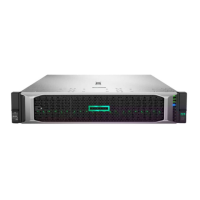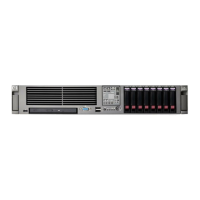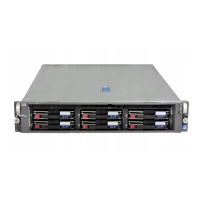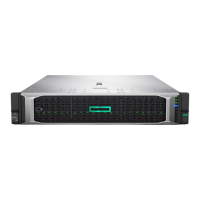Node-based cluster groups
Creating only one resource group a nd one virtual ser ver for each node facilitates group and resource
administration. This setup a llows administrators to include all file share resources under one group.
Clients access all of the resources owned by one node through a virtual server name.
In node-based c
luster groups, each group has its own network name and IP address. The administrator
decides on whi
ch node to place each p hysical disk resource. This configuration provides a very coarse
level of granu
larity. All resources within a group must remain on the same node. Only two IP addresses
and network n
ames are required. This confi guration creates less overhead for resource and network
administrat
ion. A possible disadvantage of this approach is that the resource groups can potentially
grow large w
hen many fi le shares are created.
Load balancing
The creation of separate cluster groups for each virtual server provides more flexibility in balancing the
processing load on the cluster between the two nodes. Each cluster group c an be assigned to a cluster
node with the preferred owner parameter. For example, if there are two cluster groups, the cluster could
besetuptohavethefirst cluster group owned by Node A and the second cluster group owned by Node
B. This allows the n etwork load to be handled by both devices simultaneously. If only one cluster group
exists, it can only be owned by one node a nd the other node would not serve any network traffic.
Cluster resource overview
Hardware
and soft ware c omponents that are ma n aged by the cluster service a re calle d cluster resources.
Resources represent individual system components. These resources are then organize d into groups and
managed as a group.
Some reso
urces are created automatically by the system and other resources must be set up manually.
Resource types:
• IP Address resour ce
• Cluster
name resource
• Cluster Quorum disk resource
• Physical D isk resource
• Virtual
server name resources
• CIFS file share resources
• NFS file share resources
File share resource planning issues
CIFS and NFS are cluster-aware protocols that suppor t the Active/Active cluster model, allowing resources
to be distributed and processed on both nodes at the same time. For example, some NFS file share
resources can b e assigned to a group owned by a virtual ser ver for Node A and additional NFS file
share resources can be assigned to a group owned by a virtual server for Node B.
Configuring the file shares as cluster resources provides for high availability of file shares. Because the
resources are placed into groups, ownership of the files can easily m ove from one node to the other,
as circumstances require. If the cluster node owning the group of file shares should be shut down or
fail, the other node in the cluster will begin sharing the d irectories until the original owner node is
brought back on line. At that time, ownership of the group and its resources can be brought back
to the original owner node.
Resource planning
1. Cr
eate at least one virtual server for each node in the cluster.
HPProLiantDL380G5StorageServer 133

